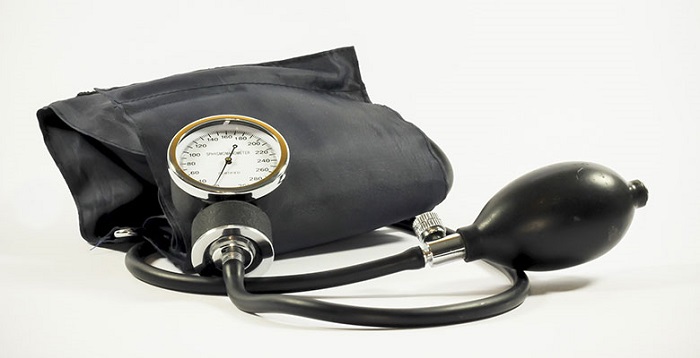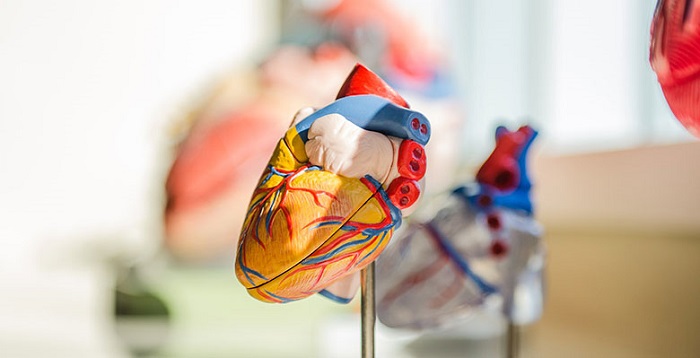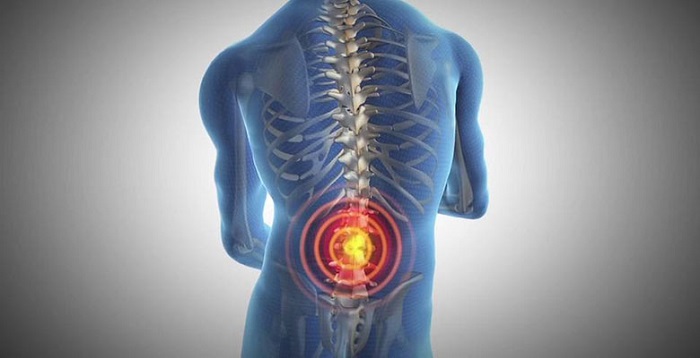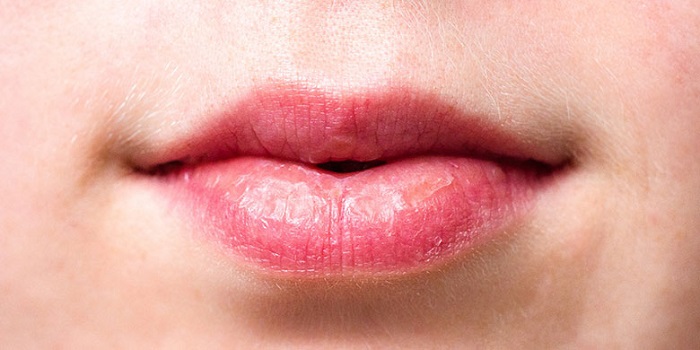Smoking cannabis brings about a number of changes in your body, physiologically as well as psychologically. This post from Hail Mary Jane outlines the most common ones.
Learning about the effects of cannabis on your mind and body can be eye-opening. Not only does the herb teach you about yourself, but understanding the physical effects of the plant can open up new ways of thinking about how you interact with your surroundings. Curious about the physical effects the herb can have? Here’s what happens to your body when you smoke cannabis:
What short-term effects does cannabis have on the body?

There’s no doubt that consuming cannabis can change your perception of reality and alter your consciousness.
While the acute effects of cannabis are short lived (two hours inhaled, six orally), many consumers fall in love with the herb for the thought-provoking and uplifting experience it provides.
After your first inhale, cannabis can have several immediate effects on the body. The following are short-term effects that can happen after consuming cannabis:
- Drowsiness
- Slowed movement
- Skewed perception of time
- Red eyes
- Euphoria
- Contentedness
- Laughter
- Anxiety
- Paranoia
When smoked or vaporized, these effects are fully expressed within 30 minutes after consumption. If you have eaten an edible, you can expect to wait at least 30 minutes to two full hours before the psychoactive “high” even starts.
There is one molecule to thank for the mind-bending experience that cannabis provides. That compound is tetrahydrocannabinol (THC), the primary psychoactive in the plant. THC is a molecule unique to cannabis called a phytocannabinoid.
Phyto- refers to plant.
These phytocannabinoids hijack the landing sites of similar molecules that the human body creates naturally. These landing sites are located on cell membranes. When THC connects with these landing sites, it exerts a variety of effects on the body.
What happens to your body when you smoke cannabis?
The short answer to this question is this: there are a lot of things that happen to your body when you smoke cannabis. Cannabis is a unique herb capable of producing over 400 different chemical constituents.
While researchers have ideas about the effects that some of these compounds have on the body, there is much more still to be discovered.
However, apart from the immediate psychological sensations of being “high”, there are a number of things that cannabis changes about your physiological self.
Here are 13 things that happen to your body when you smoke cannabis:
1. Lowered blood pressure

Cannabis compounds can cause blood pressure fluctuations. This is true for both the main psychoactive substance in the plant, THC, as well as non-psychotropic cannabidiol (CBD). “Non-psychotropic” means that CBD does not cause a psychoactive “high.”
A 2017 study published in the Journal of Clinical Investigation found that even a single dose of the cannabinoid can lower blood pressure in healthy adult males.
THC has also been shown to reduce blood pressure and dilate blood vessels. This vasodilation is the suspected cause of red-eye, a tell-tale giveaway that you have consumed cannabis. There is some evidence that those that continue to consume the herb over time can develop a tolerance to these effects.
2. Increased heart rate

Psychoactive cannabis can cause an increased heart rate shortly after consuming the herb. The heart rate increase is thought to be up to five times the normal beat. This is slightly more than the increase after sex or exercise.
Heart rate returns to normal within two hours after consuming the herb.
A fast-beating heart can be a negative side effect for some people. This might increase feelings of anxiety or panic. Those with heart conditions should be mindful of this effect when consuming cannabis.
However, not all consumers will experience this side effect. Further, the dosage you take and how often you consume cannabis may have an influence on heart rate. Once a consumer builds a tolerance to the herb, this effect may or may not occur.
3. Reduced inflammation

Cannabis compounds are powerful anti-inflammatories. For this reason, some scientists and drug development companies are interested in cannabis-based medicines for inflammatory conditions like head trauma, Crohn’s disease, and autoimmune conditions.
The anti-inflammatory properties of cannabis not only make in beneficial to ingest, but the herb can be used topically to ease inflammation and pain from minor skin abrasions and wounds. Some medical cannabis patients find cannabis topicals beneficial for managing arthritis and inflammatory joint pain.
4. Changes in appetite

Many people already know that cannabis can give you the munchies. The herb is famous for inspiring more than one phone call to local delivery services. However, different types of cannabis can have different effects on appetite.
Cannabis varieties high in THC often stimulate appetite. There is some evidence that varieties high in CBD suppress appetite. As an educated guess, strains with equal amounts of the two compounds may cause your hunger to be about the same.
5. Changes in motivation

No, cannabis won’t transform you into a lazy person with no work ethic. However, psychoactive cannabis may make you feel lethargic. Preliminary research suggests that THC affects regions in the brain responsible for motivation.
However, how lethargic you feel after consuming depends on what type of cannabis you have consumed and how much. Taking a puff or two of a vaporizer or smoking device is unlikely to cause you to feel glued to the couch.
Yet, consuming a high dose of the herb can produce profoundly sedative effects. Further, cannabis contains more than just THC and CBD. Different aroma molecules in the plant called terpenes work together with cannabinoids to produce the unique effects of individual strains.
Some terpenes, like myrcene, a compound that gives some cannabis strains a musky aroma, may be responsible for the couch-locking effects of certain varieties. Myrcene is thought to have hypnotic and muscle relaxant qualities.
Other cannabis varieties, like many high-CBD cultivars, actually encourage focus and provide a calm and focused energy. Rather than being lazy, this focus often helps people accomplish more while managing stress.
6. Altered motor function

One of the oddest parts of the cannabis high is altered motor function. This is especially true for novice consumers with low cannabis tolerance. Psychoactive THC affects parts of the brain that influence movement, timing, and coordination.
While it is entirely possible to enjoy a run or a bike ride after partaking in the herb, some people may find things like hand-eye coordination and speed to be a little off kilter.
Of course, the amount that the herb affects these things depends strongly on the type and the dose. If the motor effects of cannabis make you uncomfortable, opting for lower doses of THC or switching to a high-CBD strain instead will mitigate the herb’s effect on coordination.
7. Changes in libido

Cannabis has long had a reputation as an aphrodisiac.
In fact, a review published in Pharmacological Review early in 2017 found that 70 percent of participant over multiple scientific studies reported at least some sort of enhancement of satisfaction during sexual activities.
However, the overall effects on cannabis and libido have been difficult to determine with science. Based on the early evidence thus far, cannabis may decrease libidio if its consumed in high doses.
Low doses are a different story. Early rodent research suggests that THC may cause a temporary spike in testosterone, which is a key hormone for sex drive in both men and women.
8. Changes in short-term memory

One thing that happens to your body when you smoke cannabis is a change in how you remember and lay down new information.
Cannabis produces temporary changes in short-term memory. Specifically, research suggests that it can have a profound effect on spatial memory. That means that you’re likely to forget where you set your car keys or your shoes.
You’re also more likely to forget things like what you had just said or whether or not you washed your dishes after cooking.
Thus far, there is little conclusive evidence that cannabis has a long-term negative effect on memory. In fact, there is a growing body of research that suggests that the herb may have a positive effect on memory in aging adults.
Rodent studies conducted at Ohio State University have found that treating old rats with THC reduced brain inflammation and seemed to improve memory. In additional investigations, Wenk’s team had found that humans who had smoked cannabis in the 60s and 70s were less likely to get Alzheimer’s when they got older.
Unfortunately, however, given the restrictions on cannabis research in the United States, further investigations have yet to be approved or conducted.
9. Dry mucous membranes

Unfortunately, one of the temporary side effects of cannabis consumption is dry mouth. Cannabis compounds engage with special receptor sites throughout the brain and body called cannabinoid receptors.
Normally, these receptors are triggered by cannabis-like molecules naturally produced by the body called endocannabinoids.
These cannabinoid receptors are found in the mouth and influence saliva production. Cannabis compounds can directly and indirectly engage with these receptors, decreasing your ability to make saliva.
Both THC and CBD products are known to cause dry mouth. THC perhaps has the most profound effect, causing the dreaded “cottonmouth.”
To ease cottonmouth, it’s best to take small sips of water and suck on something like a citrus hard candy or a lemon wedge. Alcohol, caffeine, and teas can make dry mouth worse.
10. More oxygen may be delivered to the organs

There are many disputes about the potential long-term effects of cannabis on the body. However, researchpublished in Neuropsychopharmacology suggests that smoking cannabis may reduce the risk of stroke.
For the study, scientists performed MRI scans on 74 cannabis smokers and 101 non-consuming controls. The research found that the cannabis consumers had a greater amount of oxygen moving from the blood and into organs than non-consumers.
The participants in this study had consumed cannabis over 5,000 times in their lives, indicating that they were more long-term smokers.
Study author Dr. Francesca Filbey suggests that the greater oxygen uptake was caused by the widening of blood vessels. This allows more oxygen-rich blood to flow into vital organs like the brain and reduces overall blood pressure.
This reduced blood pressure and greater oxygen saturation would theoretically reduce a person’s risk of stroke.
Admittedly, this finding is a little controversial. Earlier research has suggested that cannabis may increase the risk of stroke. This is perhaps due to the herb’s effect on heart rate. However, no studies have conclusively determined whether or not cannabis is an independent risk factor for stroke.
11. Heightened sense of smell
Cannabis can not only make you hungry, but it can also help you better sniff out your food. Rodent researchsuggests that cannabinoids like psychoactive THC stimulate a region in the brain called the olfactory bulb, which enhances your sense of smell.
This heightened sense of smell makes you better able to detect the aroma of delicious food, which you are then more likely to sniff out and eat.
12. Irritated lungs
There’s a lot that happens to your body when you smoke cannabis. One of the main areas of concern are the lungs.
While moderate long-term cannabis consumption has yet to be conclusively linked to lung damage or disease, the herb can have some immediate effects on the organs.
Research conducted by Dr. Donald Tashkin, who has been studying the effects of cannabis and cigarette smoke on lung health for over three decades, has found that cannabis smoke is irritating to the lungs.
While significantly less damaging than cigarettes, cannabis smoke does cause both “visible and microscopic damage” to the airways of the lungs. However, this damage can be reversed when you stop smoking.
Cannabis smoking can also cause cough and inspire symptoms of chronic bronchitis. This includes possible inflammation in the lungs as well as mucous.
Opting for lower-temperature and cleaner options like a vaporizer can help mitigate some of this damage. Edibles and tinctures offer consumers two ways to avoid the lung-damage with cannabis altogether.
13. Improved night vision
Surprisingly, there is some odd evidence that suggests that cannabis might help you see better in the dark. Back in the 1970s, researchers suggested that Jamaican fisherman used cannabis to see better before fishing at night.
In the early 2000s, the respected cannabis researcher Dr. Ethan Russo traveled to Morocco, where fishermen also used cannabis elixirs prior to nighttime work. Interestingly, the herb did seem to give the fishermen a leg up when it came to finding fish in the dark.
Later, in 2016, scientists from Canada’s McGill University found that there may be good reason for these speculations. The research suggested that cannabis can alter the retina’s ability to take in and perceive light.
This perhaps is the reason why the world may physically look a little brighter after some good herb, as well as potentially enhance your ability to see in the dark.
Note: It’s important to remember that cannabis has many different effects on the body. The information listed here represents just a small sampling of all that happens to your body when you consume cannabis.
Source: What Happens To Your Body When You Smoke Cannabis? – Hail Mary Jane

